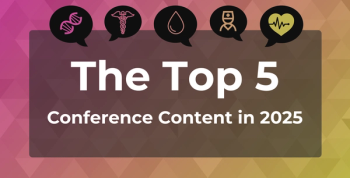
Conference Recap Highlights from AAAAI 2014
Conference Highlights from the 2014 Annual Meeting of the American Academy of Allergy, Asthma & Immunology (AAAAI) in San Diego, California.
Catch up on what you missed from the 2014 Annual Meeting of the American Academy of Allergy, Asthma & Immunology (AAAAI) in San Diego, California.
Out With the Stethoscope, In With the Smartphone: How Genomics and Digital Advances Will Reshape Practice
The introduction for Eric J. Topol, MD, who gave the keynote address Saturday at the 2014 Annual Meeting of the American Academy of Allergy, Asthma & Immunology (AAAAI) in San Diego, California, ended with the usual instruction: Please silence your cell phone.
That didn’t sit well with Dr Topol, cardiologist at Scripps La Jolla, professor of genomics at the Scripps Research Institute, and pied piper of getting medicine to finally embrace technology with the same enthusiasm as many of its patients.
Turn those phones on! Tweet! He needled conference host AAAAI for its relatively small Twitter following, which on Saturday stood just above 600. Dr Topol’s own roster tops 36,000. “I found out the AAAAI only had 87 tweets as of a few days ago,” he said, encouraging those assembled to embrace the social media platform.Read more
Challenges of Adherence to Asthma Medications Explored
Taking care of asthma patients costs the nation $56 billion a year, and included in that total are the costs of the many sufferers who do not properly follow their prescriptions.
Results presented in Sunday’s oral abstract session on adherence in asthma medications had some of the same familiar, discouraging news: Those who fail to take their medication properly are disproportionately poor, young, and African American. Teenagers present a special challenge.
But if there’s progress to be made, Sunday’s presenters offered possibilities. First, education works. Second, most nonadherence is not intentional, and thus can be addressed. Finally, broader use of both electronic health records (EHR) and technology that gives patients reminders offer promise, both in identifying points of failure and changing the result. Read more
AAAAI Issues New Round of “Don’ts” Designed to Improve Patient Care
The American Academy of Allergy, Asthma & Immunology (AAAAI) on Monday released its second list of overused tests and procedures that allergists, primary care physicians, and patients should question before they occur. The list represents the fruits of the Academy’s second year of participation in the “Choosing Wisely” initiative, and was presented at a press conference during the Academy’s meeting in San Diego, California.
“Choosing Wisely,” a project of the ABIM Foundation, asks leading professional associations across medicine to scrutinize those actions within each specialty that may be overused at the expense of quality care. “The intent is that the evidence shows that much of the care that is delivered in America is unnecessary,” said Linda Cox, MD, who was completing her term as AAAAI president. “It’s really about starting a conversation between the patients and their physicians.” Read more
Full coverage available at:
Newsletter
Stay ahead of policy, cost, and value—subscribe to AJMC for expert insights at the intersection of clinical care and health economics.








































